EMPLOYEE FEATURE
Earl Lewis enjoys the low maintenance, do-it-yurtself life
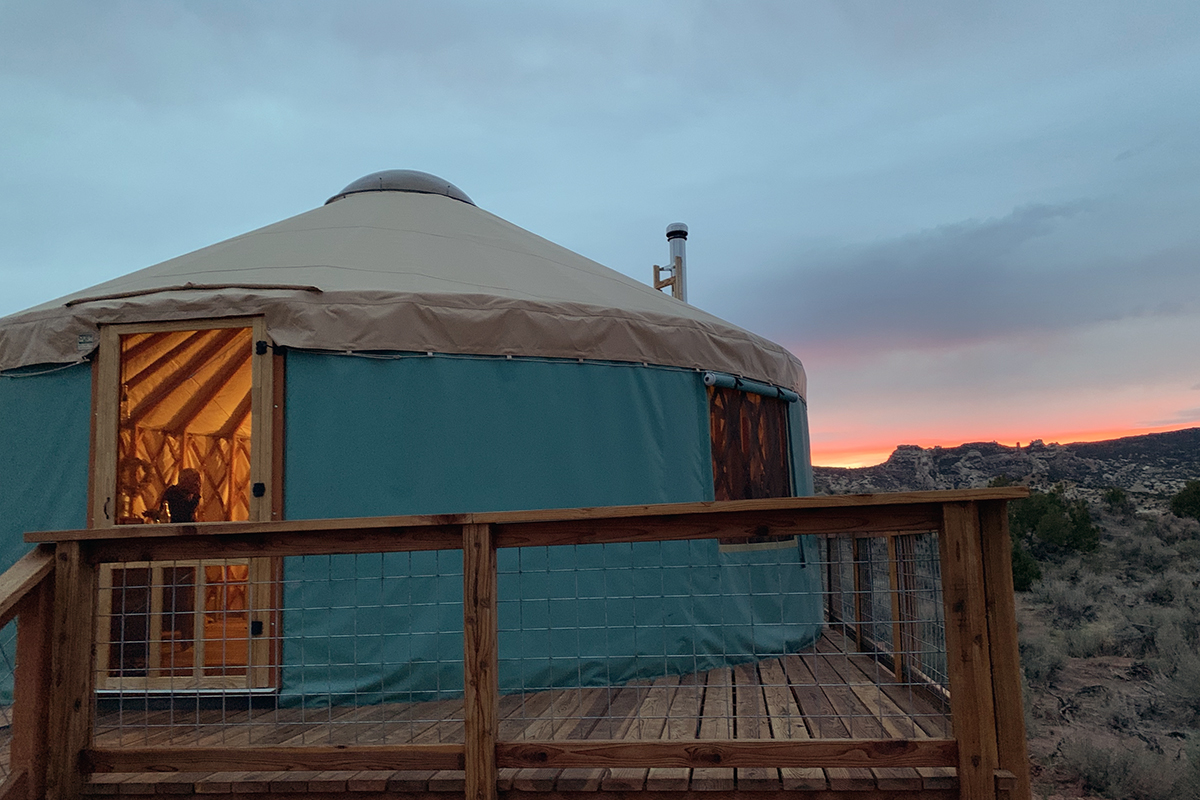
Earl Lewis' yurt in Vernal, Utah, at dusk. The yurt sits atop a 30-square-foot deck his daughter helped him construct.
During the day, the Uinta Basin is alive with lizards skittering and mule deer browsing shrubs. At night, Earl Lewis said, you might hear the call and response of coyotes, whose yelps and howls arouse the attention of the night watch — Nutmeg, a corgi-heeler mix, and Koda, a German shepherd-Akita — on guard by the bed.

Earl Lewis, senior IT project manager, UIT Project Management Office
The desert around Lewis’ vacation home in northeastern Utah — a yurt in Vernal, his wife’s hometown — teems with life. Nestled among slickrock and sagebrush, the yurt sits on a 375-acre family property near Moonshine Arch, about 30 miles west of the Colorado border.
Lewis, a senior IT project manager in UIT’s Project Management Office (PMO), describes a yurt as “a glorified tent,” though there’s a lot of history and clever engineering behind its simple design.
Widely used for thousands of years, yurts are the traditional nomadic shelter of Central Asia, particularly Mongolia, where it’s referred to as a ger.
“From the steppes of Mongolia, traditionally, a ger is portable. Families who live in them can take them down and move them in a matter of hours,” Lewis said.
Nomadic tribes used materials they had on hand, like layers of sheep’s wool. Westernized versions contain manufactured components like canvas and acrylic. Generally, they’re squat round structures with a wooden lattice frame, tension cable, radial rafters leading up to a central compression ring, and a dome skylight.
Lewis’ yurt is kit-built but boasts custom features like a 900-square-foot wood deck and stairway, which his daughter helped him install. His version also is fortified by a storm and wind kit.
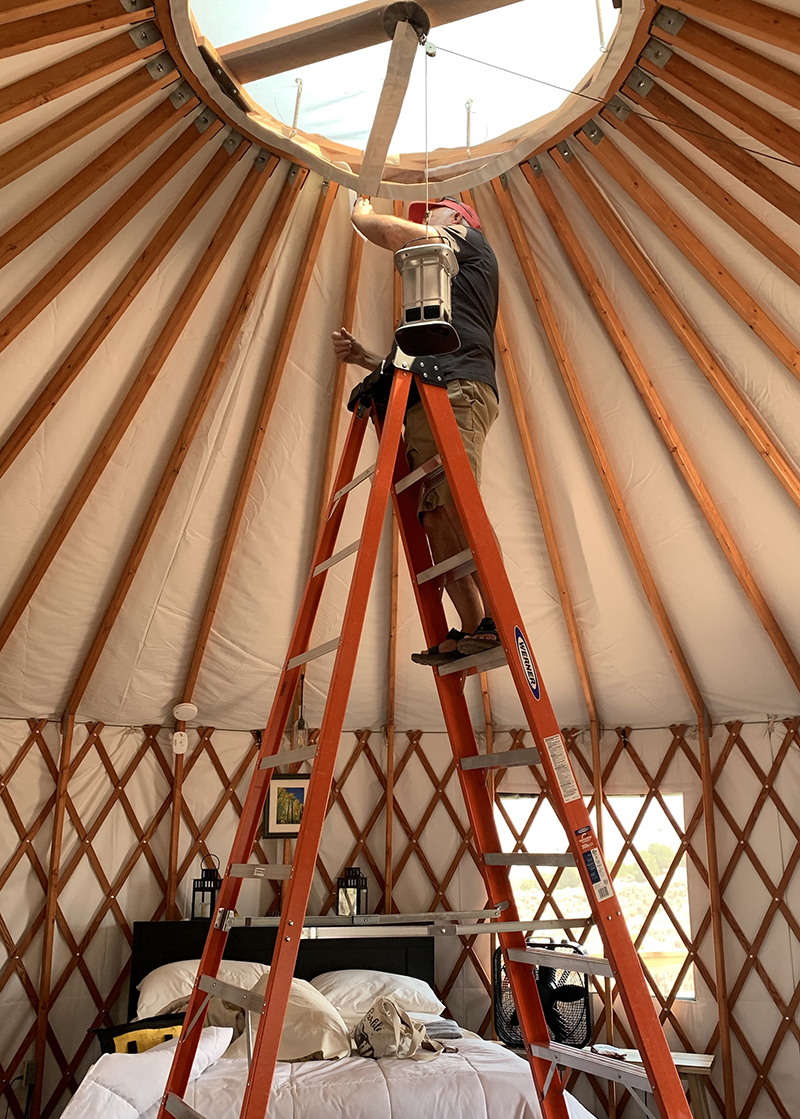
Earl Lewis installs a hanging dome light in his yurt.
In strong gusts, Lewis the circular yurt is remarkably resilient — wind slides smoothly around its aerodynamic shape. Even in a windstorm, Lewis said at most, its canvas shell flaps softly and a battery-operated lamp hanging from the skylight slowly sways.
“It doesn’t get knocked around like crazy like you’d think it might,” he said.
There's no electricity or running water, but Lewis said the yurt life isn’t exactly “roughing it.”
“It’s pretty glampy,” he said, referring to glamping, a style of camping with more modern amenities than traditional camping. “We have a queen-sized bed and a futon that folds into a queen, a kitchen counter, and a woodstove for heat. It’s very comfortable.”
To power portable lights, Lewis relies on 12-volt batteries — “the same thing you
would have in a RV when it’s on battery power.” But the interior features enough homey
touches and modern conveniences to make a stay feel like a cozy, off-the-grid vacation.
From their home in Highland Park, Lewis and his wife make the three-hour drive to
Vernal every couple of weeks, no matter the season — “we’ve stayed there in single
digits and last winter when there was 30 to 40 inches of snow on ground.” Their shortest
stay was an overnight and their longest was two weeks at the beginning of the pandemic.
Rustic or ritzy, yurts are extremely versatile. For Lewis, the advantages include being close to nature, leaving a small environmental footprint, and a simple structure with no gutters to clean and very little exterior upkeep.
“It’s super low maintenance,” he said. “This year, we’ll probably do more work on it than we’ve ever done, and it’s not a lot. We’ll unhook the canvas from the bottom edge and check the platform for insulation, do rodent blocking, things like that. But otherwise, all we have to do is show up and keep it clean.”
Another advantage to yurt ownership is their relatively low construction cost.
“We always wanted to have a place of our own, and this is an affordable way to do that,” Lewis said.
The following photos, courtesy of Lewis, show the yurt under construction:
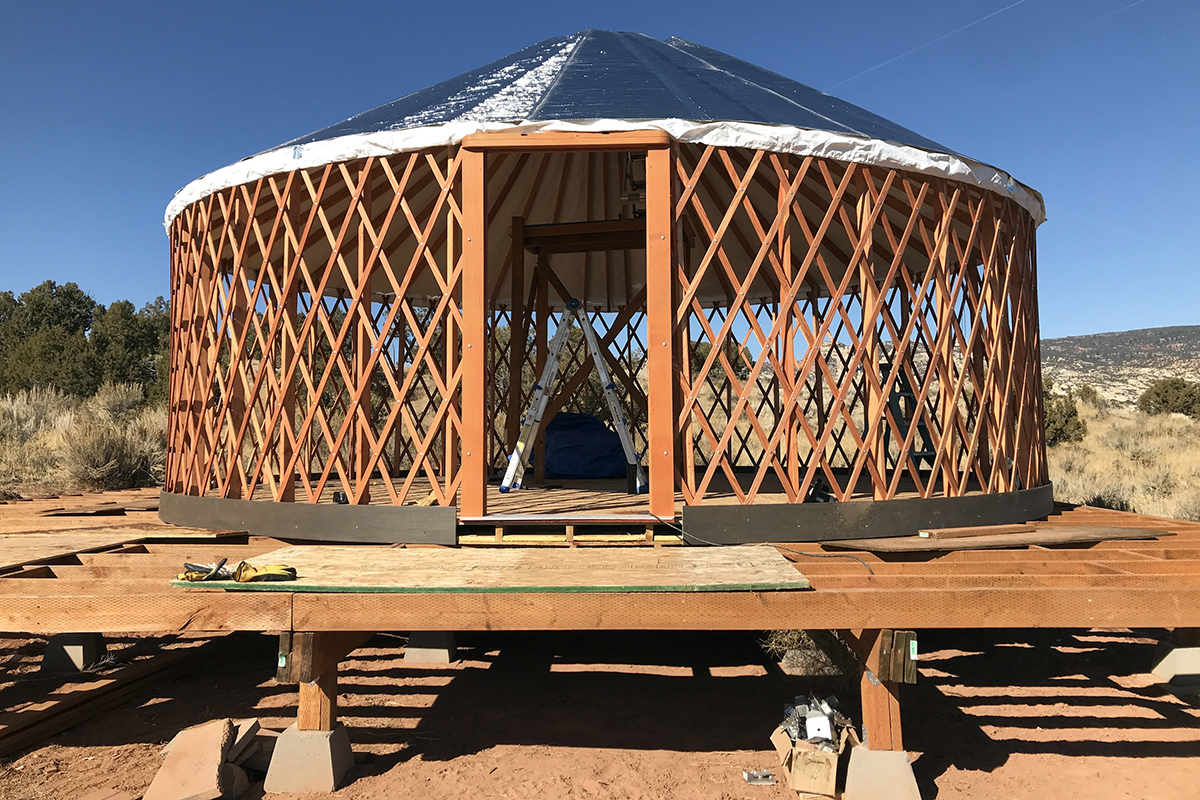
Early framing in 2019
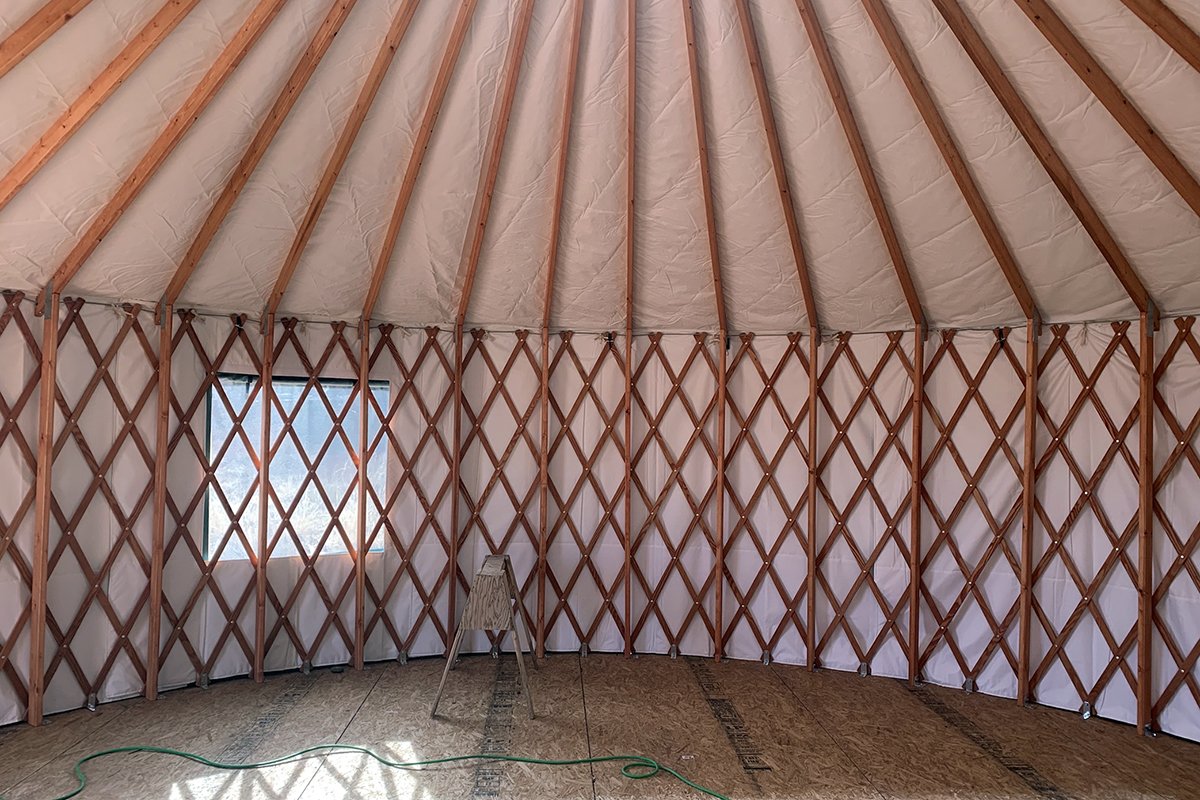
Interior view with the canvas outer cover installed
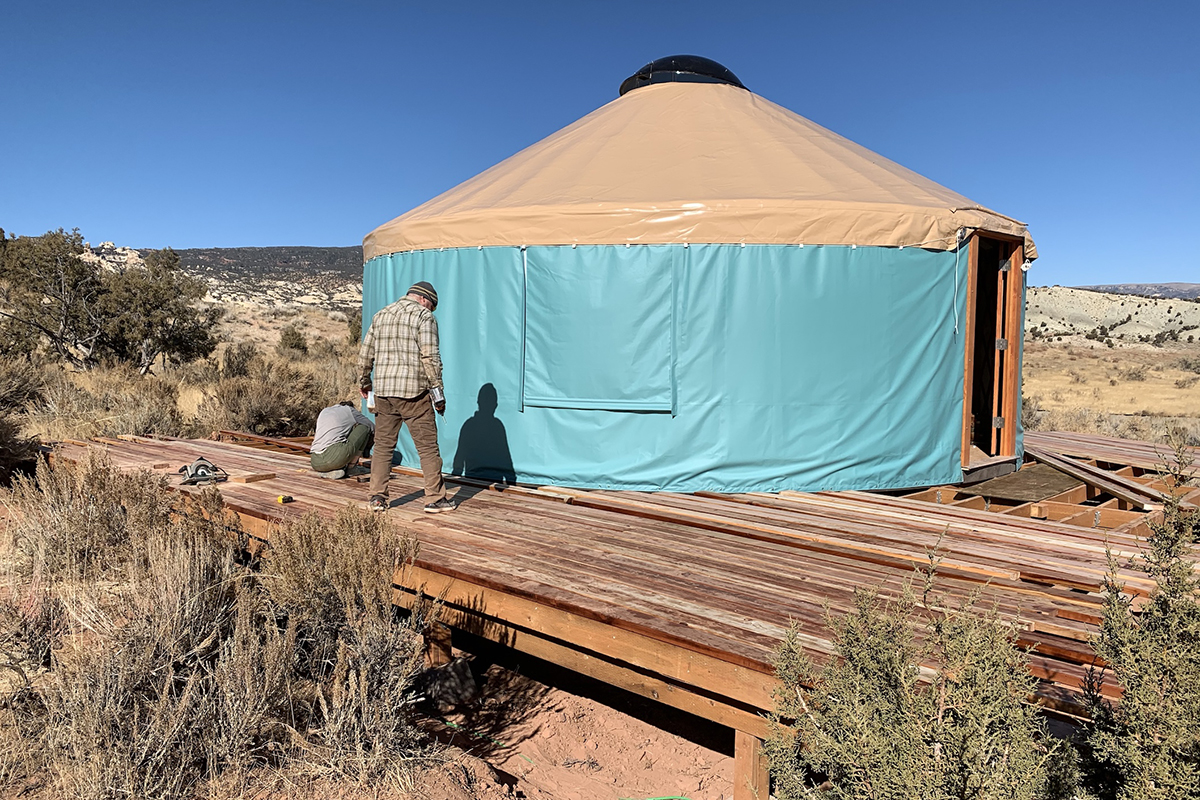
Installation of the deck
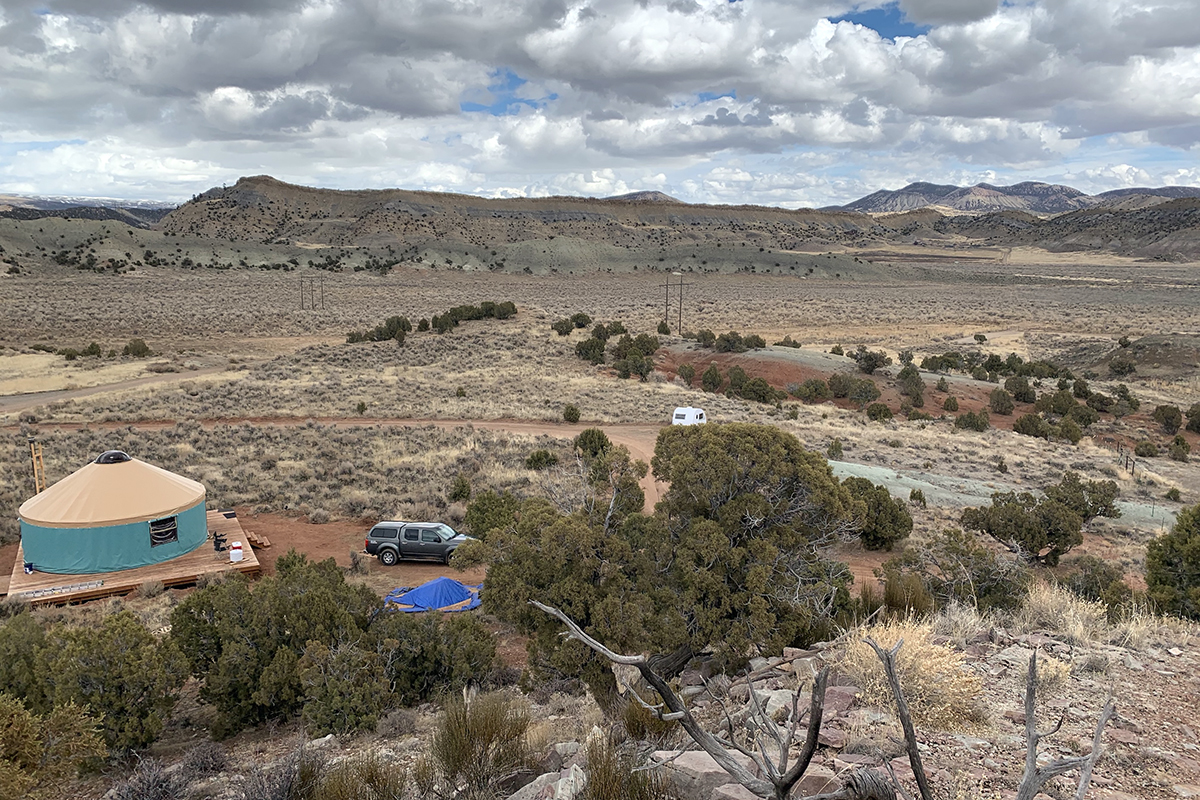
A view of the yurt from the top of a bluff

Winters in Vernal, Utah can be cold and snowy
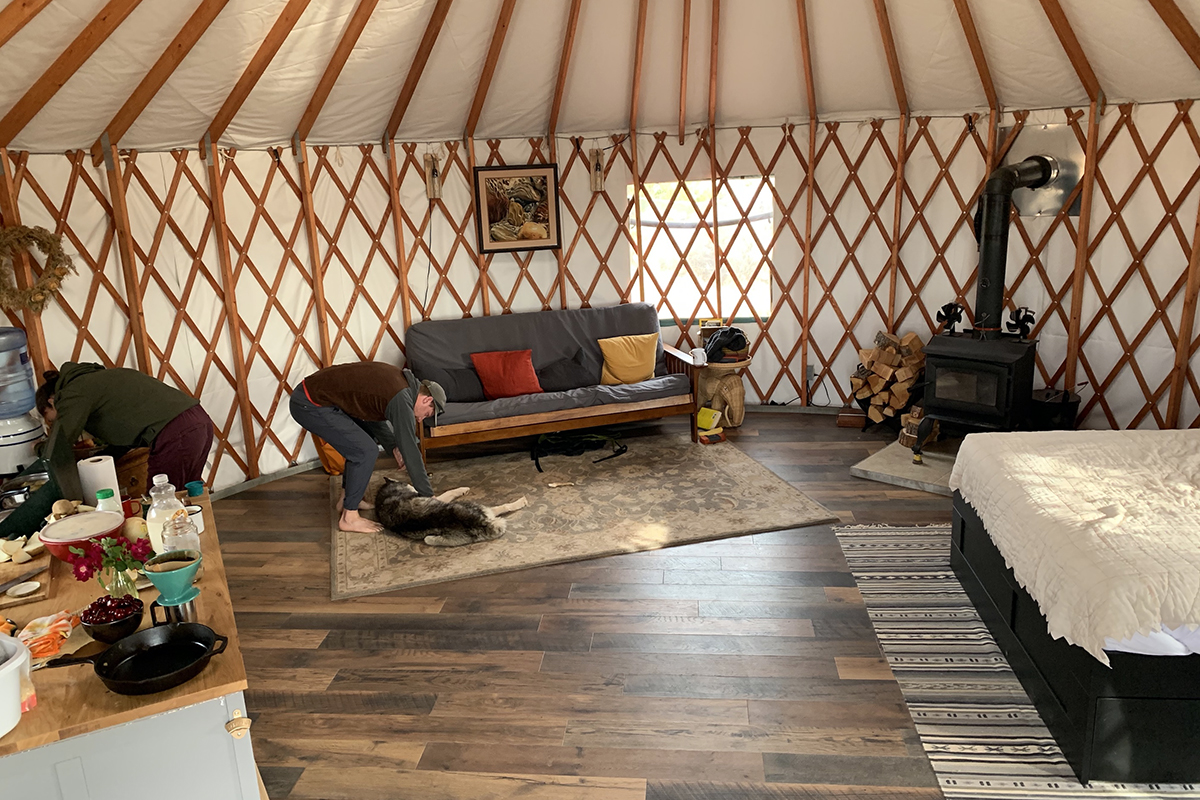
Amenities inside include a woodstove, futon, and Queen-sized bed
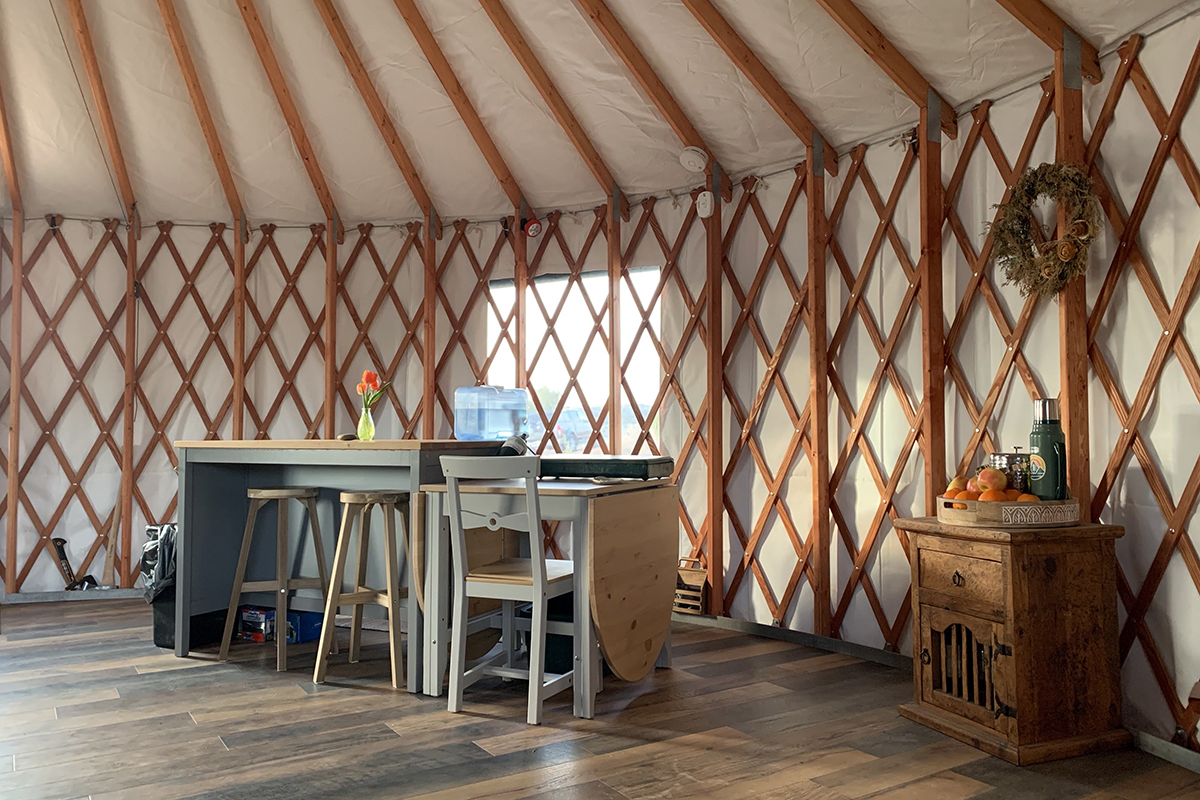
The kitchen/dining area
Node 4
Our monthly newsletter includes news from UIT and other campus/ University of Utah Health IT organizations, features about UIT employees, IT governance news, and various announcements and updates.
